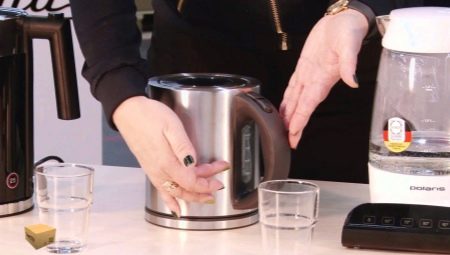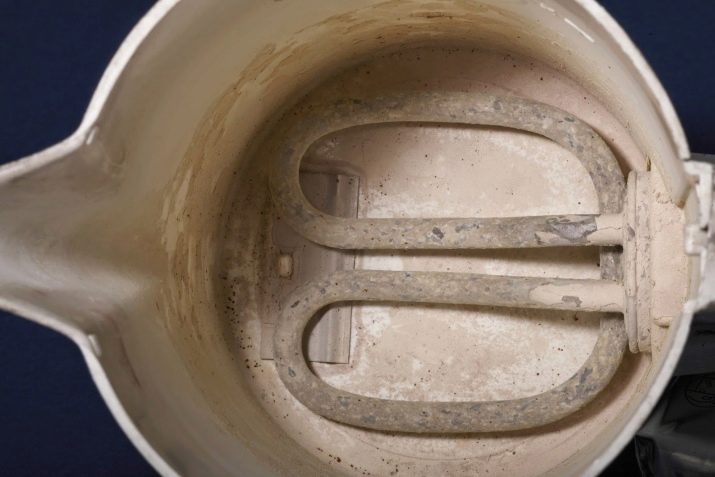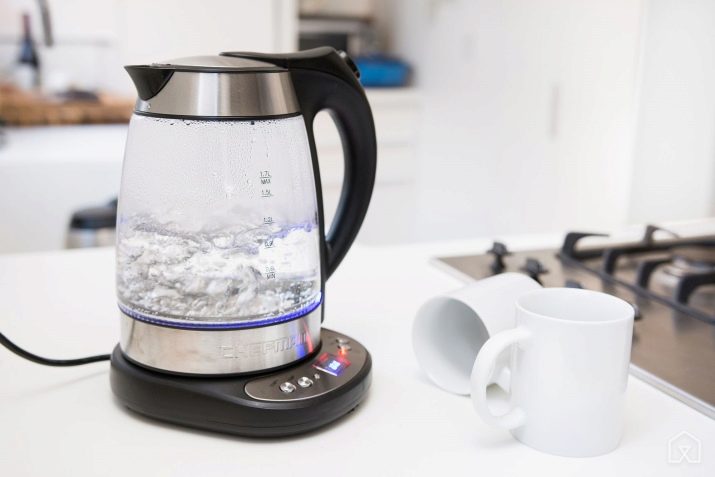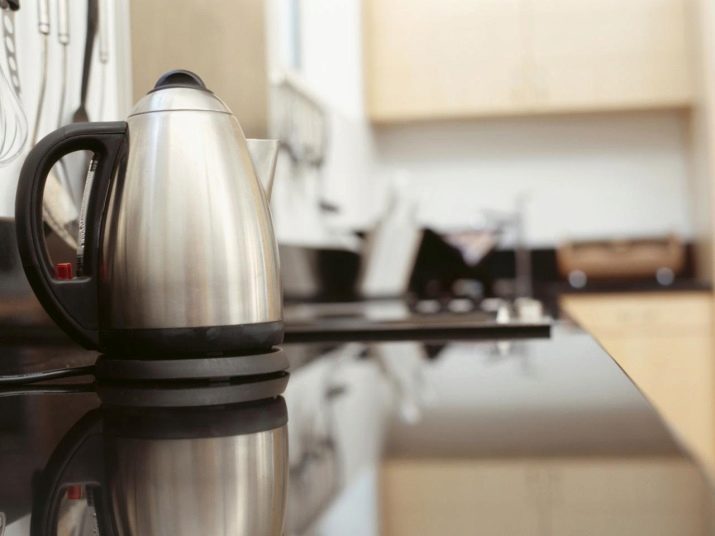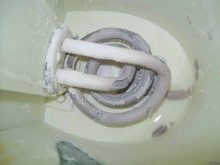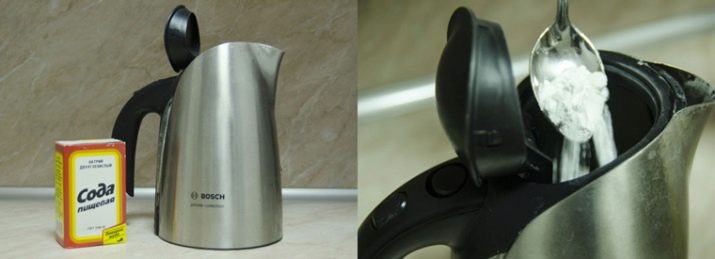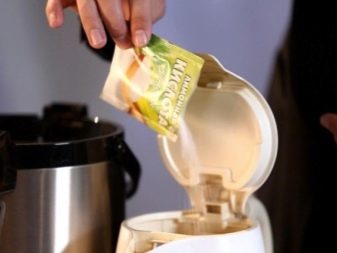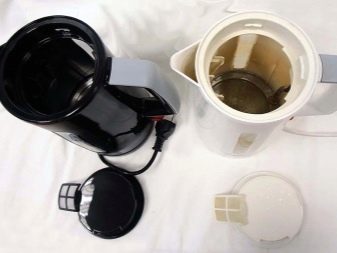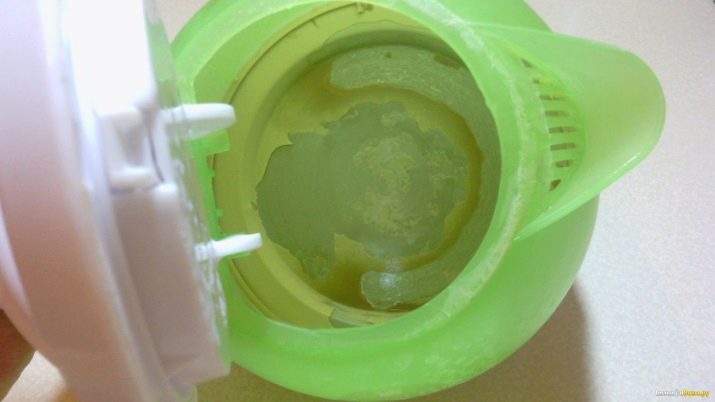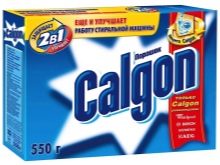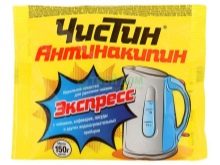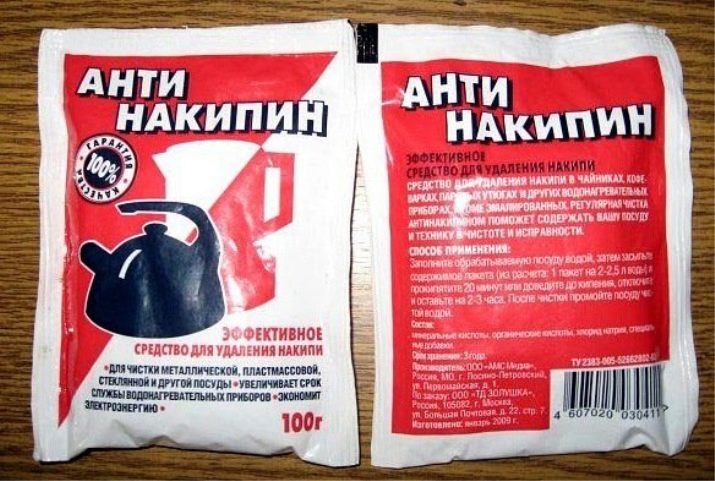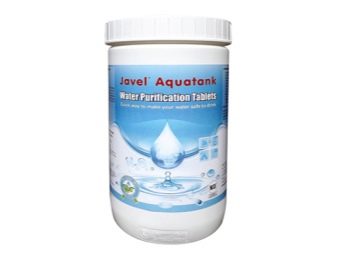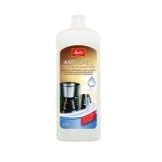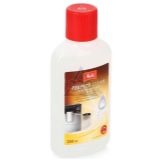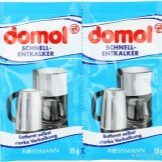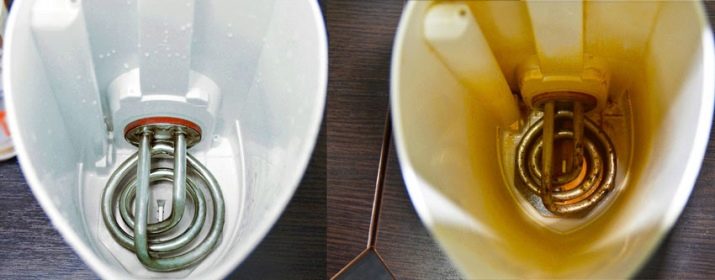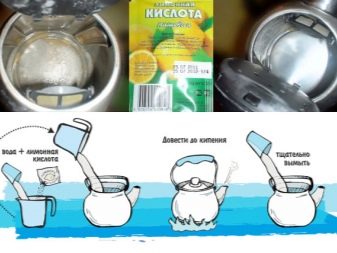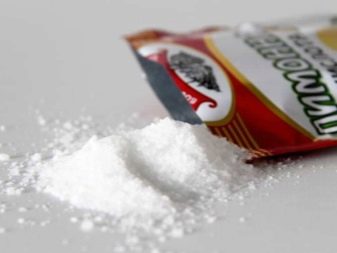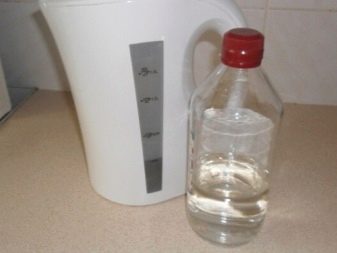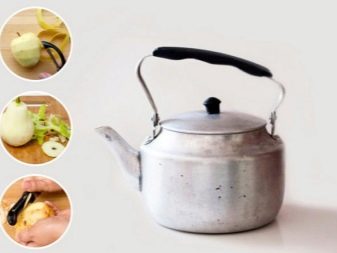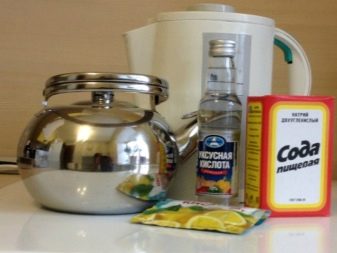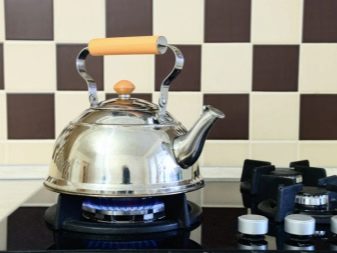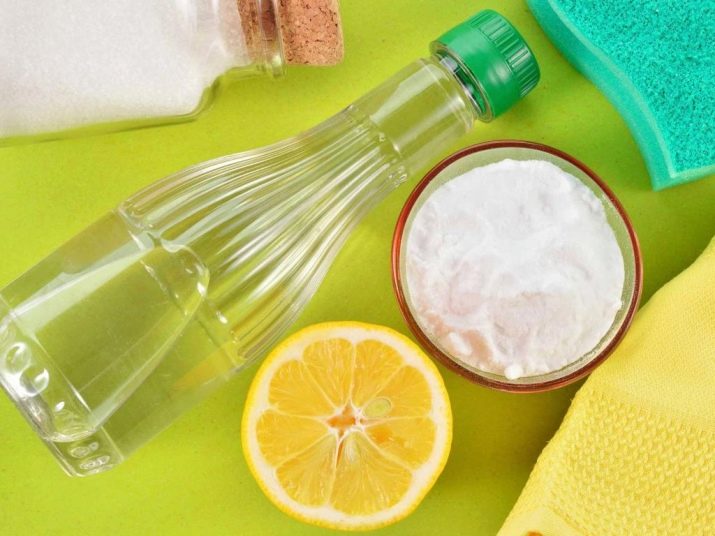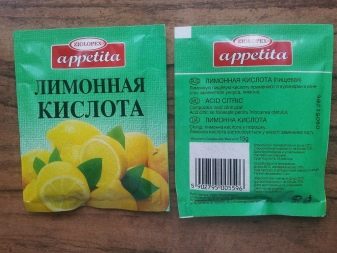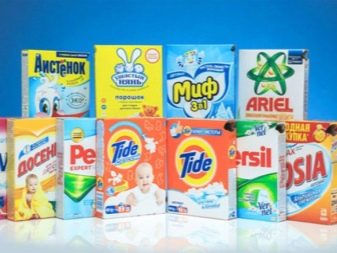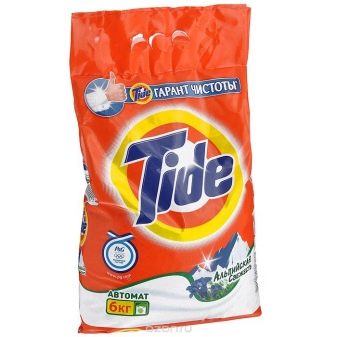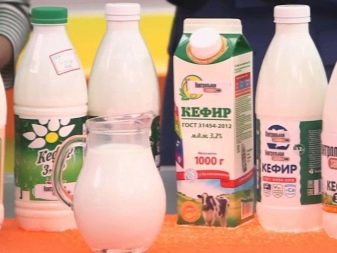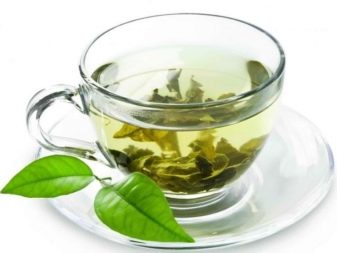Many turn a blind eye to the problem of scale, but from time to time it eats into the surface of the kettle more and more, and then no folk remedies will help you cope with this trouble. In this case, you just spoil your kitchen "friend" and spend on acquiring a new one. To avoid this, it is necessary to understand the causes of the occurrence of scale, its consequences and methods of cleaning.
Causes of
The main reason for the formation of scale in your kettle is water. That's only if for a person it does not carry much danger, then for a kitchen appliance it is a deadly liquid. The composition of ordinary running water includes many impurities, such as magnesium, calcium and various salts. At a time when a person boils water, particles of metals accumulate inside the kettle, in particular this deposit remains on the heating element.
It is important to do preventive cleaning in time, otherwise the patina will become thick and completely destroy your kettle in a short period of time.
Facilities
After seeing the plaque on the dishes, everyone understands that it is necessary to get rid of it. Unfortunately, it is not always possible to achieve the desired result immediately. In most cases, we immediately run to the hardware store, buy a descaler, forgetting that it can harm our health more than the scum itself. There are many other ways to clean kitchen appliances that are safer and will not hit the wallet.
Folk
You can destroy plaque from a metal kettle acetic acid. This method is recognized as the most effective. 100 ml of vinegar will be required per liter of water. The solution obtained as a result of mixing must be poured into a kettle and boiled properly. Wait 15-20 minutes. During this time, scale should completely go off. The walls of the kettle may not be completely cleaned. In this case, the procedure can be repeated. Do not use undiluted vinegar, as the liquid can destroy the electroplating of the heating coil.
Regular scale helps to clean baking soda, which is in every home. It is only necessary to pour water into a container and add a spoon of this product. It is necessary to warm everything on low fire until the layer of scale does not lag.
The main thing to remember is that this method is suitable only for a metal or enamelled kettle.
A good way to fight bloom lemon acid. It can be used in work with any heating element.
Citric acid can clean your device more qualitatively and safely than soda and vinegar do.
When preparing the detergent, pour one liter of water into the container and add two tablespoons of citric acid. Water needs to be boiled and cooled, then drained, rubbed with a sponge the remnants of lime and how to rinse the kettle.
It turns out such a beloved drink of all Coca cola able to cope with bloom in your kettle. To test the effectiveness of such a means, you first need to buy a drink and let it run out. After that, calmly pour the cola in the kettle to about the middle and heat over low heat until the lime is gone.
Remember that this method, though effective, is not suitable for all dummies.
Electric kettles should not be cleaned in this way, the liquid may leave a yellow coating on the white coating. After that, it is difficult to wash the resulting yellowness from the plastic device.
Universal
If the recipes described above did not help, you will have to apply more cardinal ways to solve the problem. Many chemicals are ready to help you with this.
For washing and dishwashers often use the facility "Eona bio", But it can be safely applied to fight with scum. The liquid is diluted with hot water and poured into the kettle. By the same principle can be usedCalgon, Mr. Dez Antikipin, Chistin. From scum also used Refine, Astonish Limescale Remover, Selena. All these solutions are used to remove scale in kettles, irons, coffee makers.
It is worth noting that most often with difficult pollution faster and more efficiently handle the money at the lowest cost, rather than expensive.
Chemical
Sometimes it is difficult to remove scale. Therefore, sometimes it is necessary to use heavy chemical "artillery". In any hardware store you will be recommended various drugs to combat the hateful scum. Many mistresses advise to use the tool "Antinakipin".
However, it is worth buying several such packs at once, since one will not be enough.
There are still many different tools aimed at combating scale. Some of the most popular are:
- Frau Schmidt;
- Clean home;
- "Romax anti-scale";
- Melitta Anti Calc;
- Tytan;
- Domol;
- "Bugs Anvit";
- Pure water.
By the principle of action, all chemicals are the same. The substance is applied to the surface and carefully ground. Five minutes the kettle is soaked, after which the solution is washed off. The chemical preparation in liquid form or tablets dissolves in hot water and poured into the kettle. Leave only to boil and then rinse it.
How to wash?
Clean the kettle at home is not difficult. However, it is important to choose the appropriate method specifically for your device.
Electric
Electric kettle is not advised to wash with vinegar and Coca-Cola. If your kitchen friend has a plastic or glass case, the consequences can be most unpredictable. It is better to clean it with citric acid. When preparing the solution will be enough one spoon of acid and a liter of water. After boiling, allow the appliance to cool, drain the liquid and rinse thoroughly.
Before use, be sure to boil water several times and drain.
Metal
To relieve this model of the kettle from unpleasant plaque will turn out vinegar. Previously, it was used against scale on copper kettles. This method is suitable for any iron and metal models, except aluminum. 150 ml of vinegar diluted with water, heat the solution on the fire. For complete cleaning, it usually takes 20 minutes. As soon as the kettle cools down, pour water out of it and rinse it with warm water.
Another “pill” for getting rid of a small scale buildup for enameled kettles is peel from apples or pears. Just pour water into the kettle, throw the peel into it and boil it. Scrub the inside of the container with a sponge and rinse with water.
Glass
You can clean the glass teapot with vinegar. There is nothing difficult. You need to mix one glass of water and a glass of vinegar, fill all this in a container and heat it over low heat. Then leave for a few hours, rinse and dry.
In case you do not want to mess with vinegar, use soda. Dissolve a spoon of soda in hot water, boil for ten minutes. Then rinse and wipe the kettle.
If neither of the two options helped to cope with the scale, mix the water with vinegar and soda. Bring the resulting solution to a boil and let stand 30 minutes. After cooling the device and rinse the container.
Another way to give your kettle a fresh look - lemon acid. Here you can apply the very acid, juice or lemon slices.On a liter of water, prepare one tablespoon of acid (1 spoon of lemon juice or 1 lobe). Boil the mixture, let it cool and rinse it.
Lemon juice can be mixed with vinegar. This option also helps to get rid of scale. Mix a liter of water with the same amount of vinegar and lemon juice. Boil, then rinse.
Ceramic
Ceramic teapots are distinguished by their beauty and durability. They require careful handling. Since the ceramic coating is brittle, any cleaning can damage the surface of the device.
To clean it you should use gentle means, one of which is a vegetable pickle.
It is boiled in a container, after which it is necessary to allow the device to cool down. Next you need to wash the scum with a sponge and detergent. There are no special recommendations for cleaning ceramic teapots, you can use any other method described above, but it is worth significantly reducing the concentration of an aggressive substance.
Highlights cases
The use of several active ingredients will help to cope quickly with a complex mission to eliminate scale. For its preparation will require water, soda, citric acid and 100 ml of vinegar. Next, pour water into the container, add one spoon of soda and bring to a boil. After draining the solution, fill the kettle with water, add acid, boil and let it warm for about 20 minutes, drain the liquid. At the end, pour vinegar into the container, boil for 30 minutes, pour it out and rinse it thoroughly with running water.
A trio of vinegar, soda and sponge also cope with a strong touch. Pour baking soda onto a sponge moistened in acetic acid solution and rub until the porridge is formed. The mixture must be cleaned with dirty areas and rinsed well.
It is possible to destroy strong scale using citric acid in tandem with ordinary washing powder.
Fill the container with water, pour in some powder and boil. In the same solution, add citric acid (one spoon will be enough) and again put to boil. The appliance will need to cool, then rinse the contents and rinse thoroughly.
How to clean rust?
On the surface of the kettle is often formed rust. You can remove these contaminants. citric acid. It will not damage metal walls. Strong rust stains on the outside of the kettle should be removed in a few steps. Immerse the kettle in citric acid for a couple of hours. To prepare the solution you need to mix 2-3 tablespoons of powder and a glass of water. Then use a toothbrush to clean the surface. In case the procedure did not help, repeat everything again.
Minor dirt will remove the solution consisting of 1 cup of water and 1 tablespoon of powder. Apply sponge to the contaminated area and wipe well.
Do not forget that every time after the procedure, the device must be washed and wiped dry.
If rust forms inside the kettle, clean it with a solution of citric acid. with a concentration of 10%. Let the dishes stand for 10 hours or leave overnight. In the morning, drain the contents from the tank and rinse off all rust and mortar residues. If the result does not suit you, the procedure can be repeated.
Before using the kettle, boil water 2-3 times and drain it.
How to remove tea bloom?
Periodically on the surface of the mugs or teapots appears tea raid. Most often this is due to the fact that the dishes are not washed for a long time.. The dyes of beverages form a bloom that accumulates, and not only can spoil the taste of the drink, it also gives the mugs an outwardly presentable look. It seems that you have to drink from dirty dishes.
The best and surest way to deal with such a touch is to try to wash the dishes after each use.In case time for this is not always enough and the presence of such dishes in the house is a fact, then the cleaning products intended for this will come to the rescue. Most often in this case baking soda is used. It removes such a bloom well.
True, you need to take into account the fact that regular use of soda can harm your dishes.
Eliminate plaque at home can be other methods. For example, many advise to use kefir or green tea for cleansing. At first glance, this is absurd, but according to the housewives, if you fill the cup with kefir or green tea and leave for the night, then in the morning you will only need to rinse and enjoy their cleanliness.
Someone cleans the dishes with salt, but forgets that it can damage the surface. Scratches may appear on the walls. Therefore, it is better to use brine. In hot water, dissolve the salt, and then wash the dishes in this liquid.
It is worth remembering that not only tea and other beverages can leave a raid. The main pest, oddly enough, is tap water. Therefore, it is recommended to wipe dry the dishes after washing.
How to scrub the fat and soot?
Periodically, all kitchen utensils fall prey to fatty deposits and soot. You can cope with an unpleasant layer of citric acid. To eliminate small grease stains, take a lemon wedge, dip it in fine salt and wipe the dirty place.
Do not use salt to clean metal surfaces. They may darken.
Outside, you can wash the burnt layer and greasy bloom from the kettle, immersing it in a container with lemon solution for several hours. To do this, mix the lemon powder and water in a ratio of 1: 5. The temperature of the mixture should be high, then the solution will clear the fire from the dishes faster.
If stains are already old, removing them will help. baking soda and citric acid. Mixed in equal proportions, the ingredients form a mixture, which you need to cover the wet surface of the kettle. The solution will react chemically with fat and promote fat removal. After applying, you need to give a little time for the reaction, and then remove a layer of dirt with a sponge and wash the dishes.
Preventive measures
To the problem of struggle with scale appeared less frequently, it is necessary follow some guidelines:
- Use only filtered water for boiling in the kettle.
- Lightly formed plaque is easier to remove. Therefore, clean the device as soon as possible once a month. Ideally, once a week.
- Do not keep water in the tank. It is better to leave the kettle dry, then it will last longer.
- It is recommended to rinse the kettle daily.
- Periodically boil water with citric acid. You can simply leave the kettle for several hours with acidified solution.
- If you find that the heating coil or disc has changed color, you should consider buying a new kettle.
To learn how to effectively clean the kettle from scale, see the following video.
